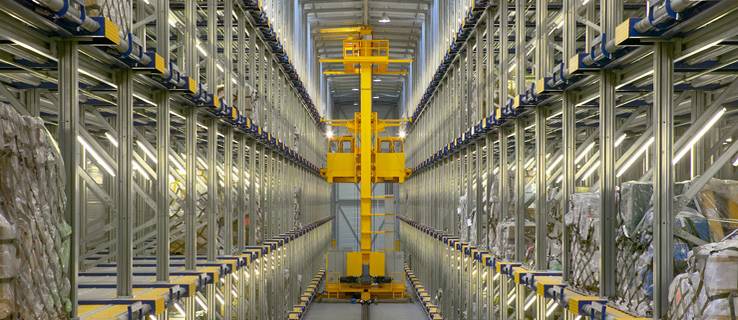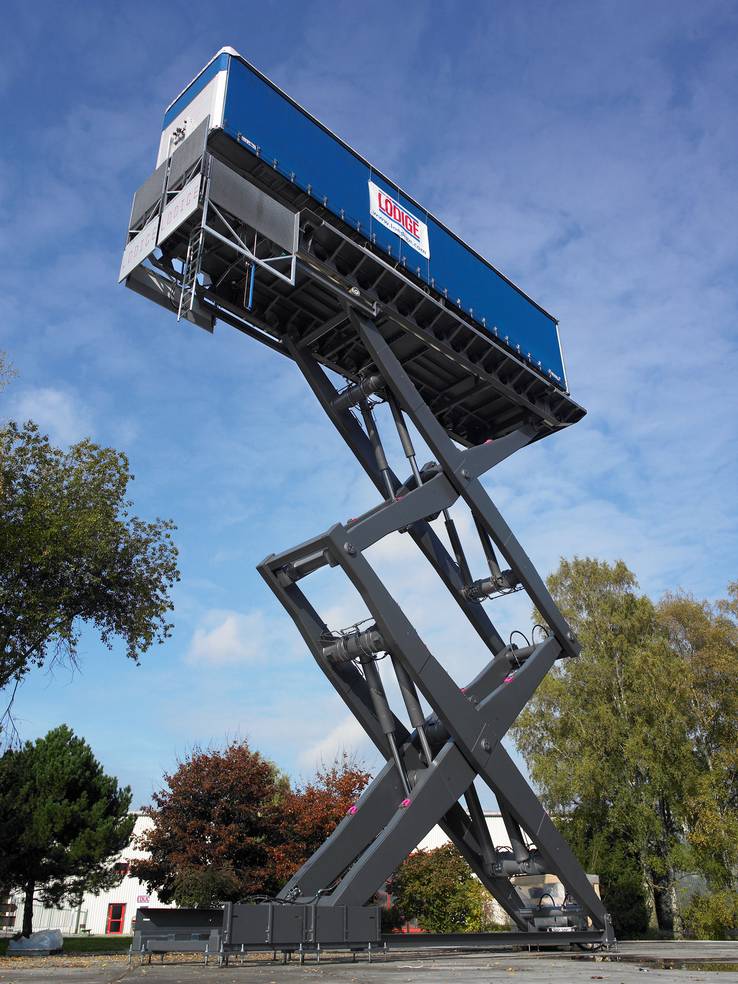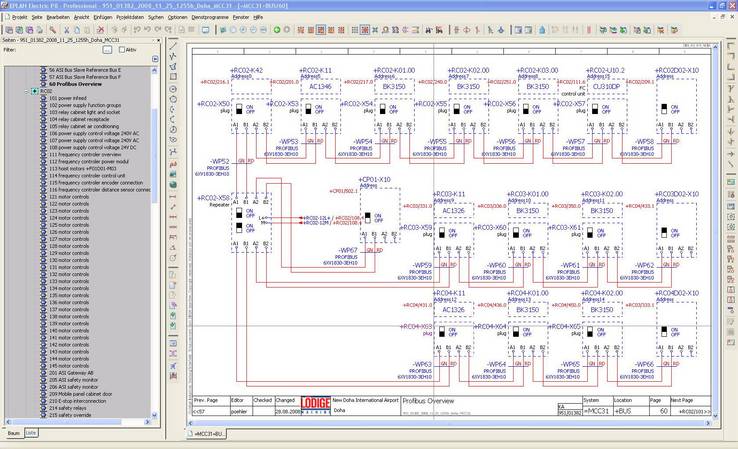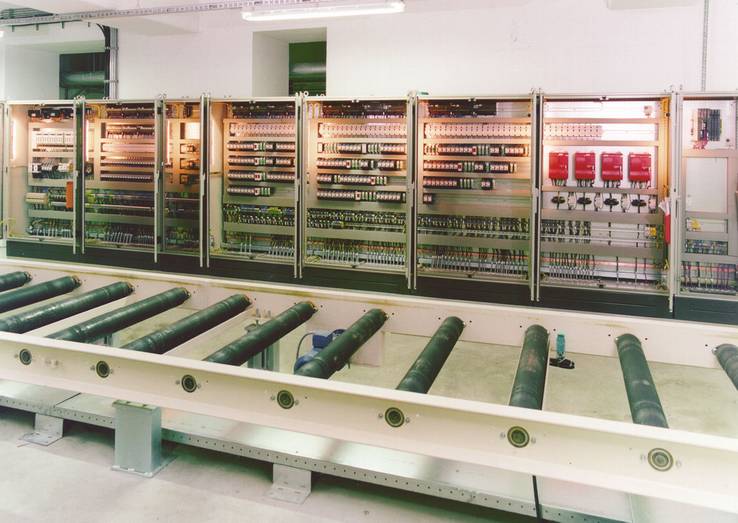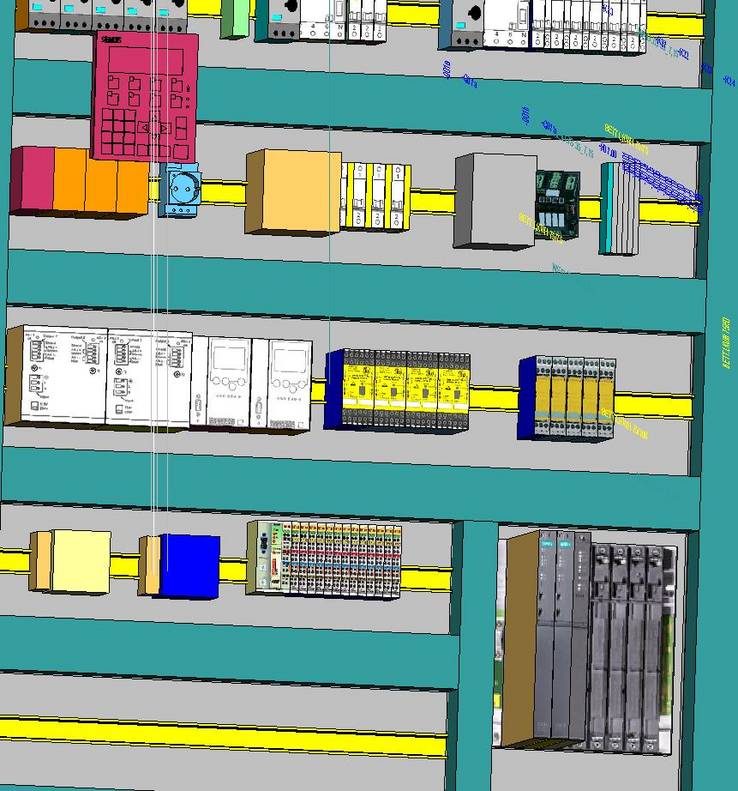The short way to a schematic
For the electrical design, Lödige Fördertechnik GmbH uses EPLAN Electric P8 and EPLAN Cabinet thereby benefiting from a uniform data basis over the entire development and production process.
Lödige Fördertechnik GmbH in Warburg develops and builds complex lifting, conveying and cargo handling systems. For the electrical design, the company uses EPLAN Electric P8 and EPLAN Cabinet thereby benefiting from a uniform data basis over the entire development and production process. Of special importance in this context is the standardized and automated creation of schematics. More than a few words are needed to describe the product range of Lödige Machines GmbH in Warburg. First, there are heavy duty lifts such as the LorryLift which can lift whole cars up to 15 meters in the air, and industrial lifts for large loads and up to 100 meters in height. Another one of Lödige's fields of activity are cargo handling systems especially for the loading and unloading of airfreight containers that typically weigh 7 to 14 tons. For these containers, Lödige also builds automatic heavy duty high-bay warehouse systems including the stacker cranes: a challenging project business that demands intensive development work because these heavily used systems have a planned lifetime of 20-30 years. Another division is devoted solely to the development and production of car park systems in which cars, in a manner similar to high-bay warehouses, are 'stored' on pallets - a space-efficient way of creating parking space. This product diversity means that designers handle smaller individual projects, especially in the air freight system and distribution center segments, but also work on large projects with 800 individual machines. It is often possible to use existing modules such as, for example, converters and transfer stations. However, many machines are custom-designed. Costs and time pressure necessitates modularization
As head of electrical design, engineer Burkhard Pöhler has made it his goal to expedite the modularization of machines and systems. Here, Mr. Pöhler, who is also a patent engineer, sees a need to take action: "Currently, approximately 25% of what we produce are standard machines and 75% are special designs. This relationship should be reversed in the medium term. The cost pressure and the scope of the individual projects demand this: For example, we are currently working on an air freight system with around 1000 individual machines." Another degree of complexity comes from the trend to decentralize control technology. Without a doubt, this simplifies the modular structure of the system, but it also demands more complex network structures as compared to central, enclosure-support installations. The same applies to the production of systems: Lödige manufactures not only in Warburg, but also in a manufacturing network with international subsidiaries and suppliers. E-CAD: Always up-to-date
Therefore, it is crucial to Lödige to have a uniform data and information platform. In electrical design, EPLAN Electric P8 is used for this task and migration to the new EPLAN Platform took place early on. Burkhard Pöhler: "The principle of a uniform data basis for various disciplines was immediately convincing - the resulting working method offers considerable advantages in terms of quality and speed, especially in the case of complex projects." Tools for automated schematic creation
The speed factor is an important criterion for Lödige engineers. In larger projects, electrical design creates 50 to 100 schematics which each contain 500 to 600 drawings. The EPLAN schematic generator is a great help for this task: In the case of AS-i modules, which Lödige mainly uses for sensor control, it shows, for example, which address is free. A great orientation help in schematics that already exist or are being developed is standardization, which is made possible with EPLAN tools. Automatic setting of location designations makes assignment easier and for address assignment, designers use a tool that generates a tabular PLC card overview. All references as well as, for example, mapping of main and auxiliary elements remain transparent and consistent in themselves even when changes are made. This saves time and prevents errors. Basis for 3D view
The 3D view of the individual parts is either created by Lödige itself or is called up from the EPLAN Data Portal. Burkhard Pöhler: "The EPLAN Data Portal is a good setup that we often use. That is one of our selection criteria for components: We prefer suppliers whose data, including the connecting points, we can transfer from the portal. This saves us work and we always have the latest version of data and drawings without having to update the data." The EPLAN Data Portal also provides other advantages for Lödige, because enclosure producers can be sent as much data as possible with the invitation to tender. In addition to the bill of materials, they also receive, among other things, cable overviews, terminal diagrams and files for labeling. Enclosure design with EPLAN Cabinet
By migrating to EPLAN Electric P8, Lödige already fulfilled the requirements for using another EPLAN Platform building block which comes into play here: EPLAN Cabinet. This software helps designers plan enclosures. Cable ducts, mounting rails, terminals, guards etc. can be placed with a simple mouse click. The system takes minimum clearances and blocked-off areas into consideration; online collision control prevents placement errors. That - highlights Burkhard Pöhler - is a feature that is often used for operators' desks as well as for enclosures: Particularly in the case of these components, there is little installation space. The 'virtual prototype', the result of an EPLAN Cabinet design, meets all the requirements of a CAD representation, which can be used in mechanical and electrical design without difficulties. In this way Lödige reaps the benefits of greater security in project planning. The product information used in EPLAN Electric P8 that comes from the portal also contains mechanical data, such as for example, dimensions and drilling data relevant to enclosure construction. Automatic routing, which facilitates cable preparation, is supported. And there is even more automation in the design: When planning projects, Lödige uses the Rittal RiCAD catalog which makes 3D versions of the enclosure housing available to EPLAN Cabinet for development. These are also used for the enclosure's thermal design. Enclosure development automated, enclosure construction delegated
The decision in favor of EPLAN Cabinet was accompanied by the outsourcing of enclosure construction. Burkhard Pöhler: "The development expertise of electrical design clearly remains in house; enclosure construction, however, is not one of our core competences. For this, we now work together with qualified, external partners." As a result, time and flexibility factors take on even more importance. Whereas, in the case of "in-house production", for example, components with long lead times are ordered in advance and in the case of cable ducts, a single supplier has to be defined, the processes are now more clearly structured. Only when the schematic is completely finished is there an invitation to tender. Burkhard Pöhler: "This means: We have to be able to exchange individual parts in the diagrams. This generally applies to 'last minute' changes - schematics always have to be up-to-date and match the mechanical engineering data." At the same time, project planning with EPLAN Electric P8 and EPLAN Cabinet, which gives the enclosure producer exact specifications, has the advantage that Lödige standards are always adhered to. The same enclosure type will look the same even when it is built by different manufacturers. In other words: Time and money are saved
By using EPLAN Cabinet und EPLAN Electric P8 electrical design saves time and money. Burkhard Pöhler: "We not only benefit from standardized enclosure layouts, we also get additional data such as wire lengths and drilling data for 3D design for practically nothing. And the many automatic functions that we have written in scripts speed up our work considerably. And the EPLAN Platform data basis makes documentation easier: The desired documents can be created as PDF files practically at the click of a button. Even though outsourcing enclosure production makes the design and its scope even more complex, the design time has not increased. And at the same time, savings of over 20% have been achieved in enclosure production.
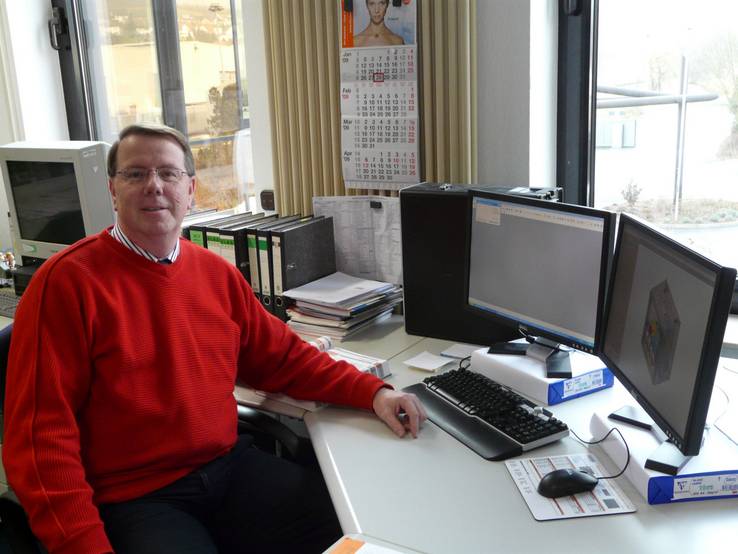
Engineer Burkhard Pöhler, head of electrical design at Lödige Fördertechnik GmbH, is expediting the modularization and automation of design processes.


